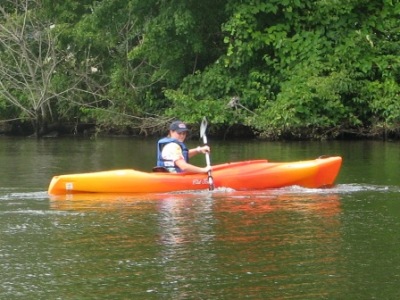
For paddlesports enthusiasts, one of the most important decisions to be made is the purchase of a craft. For many paddlers, choosing between kayaks vs. canoes can be a complex process.
For most outdoor enthusiasts, the decision to purchase a kayak or canoe will be determined by individual and family needs. The first determination usually involves capacity.
Will the craft be for an individual or will it need to carry multiple occupants? If the craft will carry more than one person, how many occupants are capable of paddling? A small to mid-sized kayak may be the best option for solo paddlers while situations involving multiple occupants may require a canoe or other craft.
In addition to human occupants, paddlecraft are often required to carry cargo. Before making a purchase, it is important to consider the weight and space capabilities of the craft. In many cases, manufacturers specifications will include total number of occupants as well as a total weight rating.
The decision to choose a kayak or canoe is usually influenced by the environment where the craft will be used. Weather, water conditions, distance requirements, and other factors can affect requirements for paddlecraft. Knowing the limits of each model is important before choosing a kayak or canoe.
For paddlesports enthusiasts, a basic understanding of vessel stability is imperative. Like all vessels, the stability of a kayak or canoe is a function of its hull shape, beam, load, and center of gravity.
Sit in kayaks tend to be the most stable types paddlecraft, due to their lower center of gravity. In the case of sit on kayaks and canoes, stability is largely based upon seating, occupancy, and total payload.
Seaworthiness is another factor to consider when choosing a kayak or canoe. Each model has limitations related to wind, current, waves, water intrusion, and other environmental effects.
Handling can be an important factor when choosing between a kayak or canoe. Some paddlers require extreme maneuverability while other enthusiasts may require that a vessel be designed for speed and the ability to track straight.
In general, shorter, wider hull designs tend to be more maneuverable while long, narrow craft are usually faster, easier to propel and provide better tracking. Taller hulls offer more protection, but suffer greater effects from crosswinds.
Paddling requirements can also affect the decision to purchase a kayak or canoe. Traditional canoes usually require single paddles while kayaks are propelled by doubled ended paddles.
Both types of paddlecraft are available with alternative forms of propulsion. Some larger canoes have the capacity to handle outboard motors. Other models accept electric trolling motors.
A number of kayak models are available with propulsion systems. A well known option is produced by Hobie Cat. Their system uses foot pedal drives which are connected to flaps under the hull. Models from other manufacturers feature hand pedals or battery-powered propeller drives.
Transportability is another key factor when choosing a kayak or canoe. In most cases, paddlecraft will need to be moved from storage to a vehicle, secured for travel, and finally, transported to the launch site.
Obviously, size and weight have considerable impacts on transportability. Many smaller kayaks can be handled individually while larger paddlecraft may require two people for loading and launching.
Transportability is one of the biggest limitations for paddlesports enthusiasts. In response to the problem, equipment manufacturers offer hundreds of products that are intended to assist with transportation, loading, and launching.